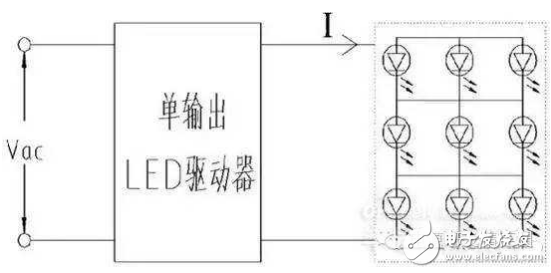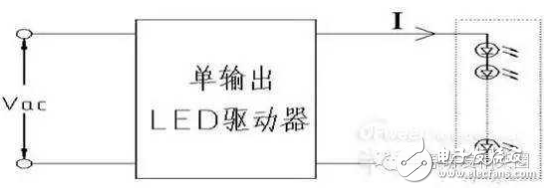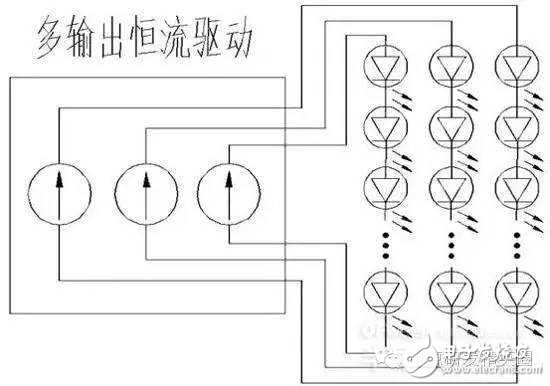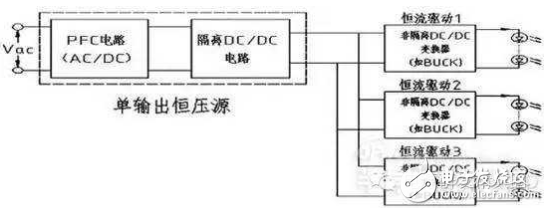As a new energy-saving and pollution-free light source, LED lamps play a revolutionary role in modern lighting applications due to their unique illuminating lighting characteristics. As one of the core components in the LED lighting industry chain, the typical problems of low reliability and high cost of LED drive power drive control technology have always restricted the development of LED lighting. The development and reliability research of multi-channel LED drive power technology is an important issue in the industry.
1, LED driving status analysisA notable feature of general-purpose LED lighting at home and abroad is that the light source is usually composed of a large number of LED chips. The characteristics of the LED itself determine that the LED is suitable for constant current driving, which has been recognized by experts and scholars at home and abroad. The LED driving method is mainly a single-channel constant-voltage output (light source built-in constant current source), a single-channel constant current output, and a single-channel constant voltage source configuration multi-channel DC/DC constant current output.
1.1 single output constant current drive
Driving the LED light source as a single set of loads from a single output power supply is the simplest way to control the LED drive. There are several ways to connect multiple LEDs that make up an LED light source. Figure 1 below shows all LED load connections in series. The single output power supply is a constant current source that drives the LEDs. Since the light sources are connected in series, there is no current sharing problem, but when the number of LEDs connected in series is large, the light source voltage will increase, and the excessively high light source voltage requires the insulation cost of the whole lamp to meet the safety standard, and the higher the heat sink and insulation requirements of the lamp, The greater the thermal resistance, the worse the heat dissipation effect will affect the life of the LED lamp.

As an improvement, the LED lamp shown in FIG. 2 is a grid-like arrangement structure, which can prevent the voltage of the light source from being too high. When the number of parallel LEDs is large, the single lamp is open, which has less influence on the entire LED lamp. However, this single LED is directly connected in parallel, the current balance of the LED is poor, resulting in a decrease in the reliability of the LED light source; at the same time, one of the LEDs is short-circuited, and the LEDs connected in parallel are extinguished.

As shown in Figure 3 below, the LEDs are connected in series and then connected in parallel. In the absence of LED failure, the current sharing characteristics of the structure are better than the grid structure shown in Figure 2, but if some LEDs have a short-circuit fault, Causes severe current imbalance between multiple strings of LEDs.

The above analysis shows that single output constant current drive has certain limitations in application, especially the parallel connection mode of LED light source will have a great impact on the service life and reliability of the light source.
1.2 multi-output constant current drive
As shown in the circuit structure shown in Figure 4 below, each group of LED loads is driven by an independent constant current source. This is an ideal solution. This aspect solves the problem of current imbalance between multiple outputs. The shortcoming of the aforementioned single output constant current driving is overcome, but the driving efficiency of the scheme is relatively low.

At present, the LED multi-channel driving scheme is more commonly used as shown in Figure 5. At the output port of the single-output constant voltage source, several stages of non-isolated DC/DC converters are configured, and each LED load is realized by a separate DC/DC converter. Constant current drive control. The shortcoming of this scheme is that the DC/DC converter circuit is relatively complicated, the cost is relatively high, and the reliability is low; for each additional DC/DC converter, the driving efficiency is correspondingly reduced, and the electromagnetic interference (EMI) is easily accompanied; There are differences in the voltage, current and power of each LED load of different types of light sources. The design of the universal DC/DC converter is difficult to standardize, which brings great inconvenience to the industrialization.

flyphotography
SHAOXING SHANGYU FEIXIANG PHOTOGRAPHIC CO.,LTD , https://www.flying-photography.com